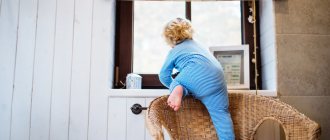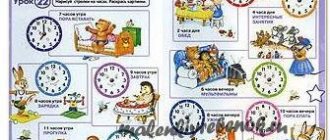Senior group. Senior preschool age. Children 5-6 years old
Summary of an educational lesson for the senior group “10 records among birds” Goal: to introduce children to “record-breaking”
.
Objectives: • introduce children to birds from different continents and give an idea of the “record holders”
among them;
• develop cognitive interest in nature; • activate and enrich children’s vocabulary with words such as “dimensions”
,...
Summary of the White Month holiday for children 4–5 years old “Sagaalgan - a holiday of light and goodness” Scenario of the holiday “Sagaalgan – a holiday of light and goodness”
To the sound of cheerful music, children run into the hall and sit on chairs.
(1 melody)
Presenter: Come in, friends! Dear children! Dear guests! Congratulations on the Sagaalgan holiday! Today we have the Buryat New Year - Sagaalgan, Holiday...
METHODOLOGICAL DEVELOPMENT OF CLASS SCENARIOS FOR SENIOR PRESCHOOL CHILDREN
METHODOLOGICAL DEVELOPMENTS OF CLASS SCENARIOS
FOR CHILDREN OF SENIOR PRESCHOOL AGE
Lesson 1
Subject:
"What is air?"
Goals:
acquaintance with the air based on the “little men” method, development of mental actions consisting in finding answers to problematic questions, guessing riddles; involving children in independently formulating conclusions.
Course of the lesson
The postman Pechkin brought us a package from our friends from the Flower City, but asked us to hand it over only if we guessed what might be there.
Riddle based on the model: “Which one? What or who could be the same?
| Easy | How | goose feather |
| Transparent | How | Window glass |
| Clean | How | Washed hands |
Reading the model. Light as a goose feather, but not
feather;
transparent, like window glass, but not
glass;
clean as washed hands, but not
hands.
What is it? (Children's hypothetical versions with explanation. It is not necessary that the children guess the riddle.) Thus, a problematic situation arises that you and your children will solve in the process of experimentation.
We open the parcel, it contains a plastic bag filled with air.
Why did the residents of Flower City send us this bag? After all, there is nothing in it, right, guys?!
Offer to touch the empty plastic bags prepared in advance for each child. What are they like to the touch (smooth, soft...), and by weight (light, weightless...), what by shape, if squeezed (shapeless), if smoothed (rectangular), by sound (rusting, rustling...)?
Open the bags, move the open bag up and down, left and right, close the bags from the side of the hole (as they twist, they swell, children see that they become convex). But the pouches can be convex when there is something in them, therefore, something contributed to the change in the shape of the pouch? What could it be? (Children reason and come to the conclusion that there is air in it.)
Was there air in the bag before twisting? (Children come to the conclusion that there is air in the twisted bag.)
Can we see air?
Although air is invisible, it can still be detected and something can be learned about it.
Experience 1
What did the residents of the Flower City send us? Why do you think?
We open the plastic bag sent by mail, gradually release its contents and smell the smell. What's the smell? (Fresh, clean, smells nice, floral.)
What properties does air have?
Conclusion:
the air has a smell, it is invisible (invisible), it flies away quickly (volatile, light).
Game "Little Men".
Little invisible people live in the air. They are very nimble, restless, and cheerful. They constantly run away in different directions. Imagine yourself as such little people, and I will collect you in a plastic bag. One, two, three, four, five - it's time for us to start the game. Children move in group space
rooms, and the teacher imitates catching them. Invite the children to once again guess the riddle proposed at the beginning of the lesson (listen and summarize the children’s answers).
Summary of the lesson.
We learned that air is light, volatile, invisible, has a smell, and moves. We guessed the riddle.
Lesson 2
Subject:
"The Air Around Us"
Target:
development of ideas about air as a material medium, about its properties (warm, cold, moves); development of mental actions consisting in searching for answers to problematic questions through experimental activities.
Course of the lesson
Statement of the problem: today, on my way to kindergarten, I was enveloped in an invisible and fresh, light and transparent fog. Is it really fog or something else? (Children's answers.)
Parsley gave us a fan. Do you think it will be useful to us and why? (Children's expected answers.)
Make movements with an open fan close in front of your face. What temperature do you feel in the air?
And if you blow on your hand, how do you feel?
What causes these sensations? (Movement of air near the face... bitches.)
Do you think it is possible to detect the presence of air in water?
How can you find out? (Children's expected answers
Draw children's attention to the aquarium. What do you see on his shifts?
Experience 1
Take a straw and a glass of water. Dip one end of the straw into the glass, take the other end into your mouth and blow gently.
What is formed in water? (Air bubbles form in the water.)
You exhale air, and it is visible in the water as bubbles. Therefore, if bubbles form in the water, this means that air has appeared in it.
Look into the bowl of water. What do you see air bubbles near the walls.)
Children draw their own conclusions
(There is air in water.)
Experience 2
Examine the sponge. What is its quality? (Soft bending.)
Why does she freely take any form? (There are holes in the sponge.)
What do you think might be in the holes* <Air.)
How can this be checked? (Immerse the sponge in water.
Immerse the sponge in water, observe and explain what is happening.
Children draw their own conclusions.
Experience 3
Guys, Petrushka claims that there is no air in the brick he found at a construction site.
How can this be verified experimentally? (Children's expected answers). Dip a piece of brick into the water (bubbles appear).
The children draw their own conclusion: there is air in the brick.
Dip lumps of earth into the water. What do we see? (Air comes out.)
Guys, what is this: invisible and fresh, light and transparent fog (Air.)
Summary of the lesson.
The teacher makes a generalization: there is air in the room, in a jar, in a glass, in water, in the ground, in a brick, in a plastic bag, in a rubber ball. The air is everywhere around us, it envelops us like something invisible.
Senior group - Physical education in the pool “In harmony with water” for children of the senior group
Publication “Physical leisure time in the pool “In harmony with water” for older children...” Compiled by: Morozova T.I., physical education and swimming instructor at MDOU kindergarten No. 9 “Semitsvetik” city. Serpukhov Goal: creating a positive emotional mood in children, a desire to go swimming, by organizing active recreation in the pool. Integration of species...
Work plan for self-education “Development of creative abilities in children 4–5 years old through non-traditional drawing techniques” Period of work on the topic: 1 year Month of starting work on the topic: September 2021 Month of completion of work: May 2022 Goal: Increasing your theoretical level professional skills and competence on the development of artistic skills in preschool children...
Master class on ri for preschoolers 6 years old Municipal budgetary preschool educational institution "Child Development Center - kindergarten No. 18 "Teremok" Master class on ri (for preschoolers 6 years old) Completed by: Poryadina Yulia Igorevna, teacher Yurga 2022 Plan - notes master class Goal...
Summary of a lesson on the formation of elementary mathematical concepts in the senior group “Number 9” Formation of elementary mathematical concepts in the senior group Lesson 1. Program content • Introduce the quantitative composition of numbers 3 and 4 from units. • Introduce the number 9. • Continue to teach how to navigate on a sheet of paper, identify and name the sides and...
Senior group - Scenario of sports entertainment in the senior group “On the Road of Fairy Tales”
Article “Scenario for sports entertainment in the senior group “On the Road...” Purpose: To develop motor skills. Objectives: To provide children with the opportunity to use motor skills and abilities in physical education classes; Create a joyful, cheerful mood in children; Foster a sense of mutual assistance; - to cultivate children's interest in fairy tales; -...
Didactic games for older preschool children
Didactic games are of great importance in the development of a child. Their main purpose is to promote the assimilation and consolidation of knowledge, skills and abilities in children, and the development of mental abilities. Such games play a dual role: they are a method and form of learning, and also...
Card index of games with Cuisinaire sticks in the senior group Colored Cuisenaire sticks help the child master the world of numbers, and also contribute to the development of logical thinking. They contribute to the development of such concepts as “more-less”, “how much more-less”, “longer-shorter” and so on. When playing with such a set, the child remembers...
Project “Laboratory of Young Researchers” (senior and preparatory group) Design of educational work with the class Full name of the class teacher: Zasedateleva O.A. Class: senior and preparatory group d/s Features of the class Many new children, 7 graduates Problems and contradictions of pedagogical activity and teacher self-determination On…
Pages: … 14893
Knowledge and skills of a child of senior preschool age.
A child’s stay in the middle group smoothly prepares him for the final stage of transition to the preparatory group.
Physical development
A child aged 5-6 years can and should be given exercise, encouraging physical activity and the manifestation of strong-willed qualities. Sports clubs and regular active recreation under the supervision of adults will be a good help. The room in which preschool children stay must provide the necessary conditions for active games and physical exercise. For this purpose, preschool educational institutions provide physical education halls, physical education corners equipped with ladders, mats, ropes, balls and other attributes. At home, you can use the wall bars and other sports equipment.
Intellectual development
By the age of six, a child should learn to focus his attention on the subject being studied for half an hour, be able to listen and take an active part in the discussion. Over the course of the year, children learn to compose a coherent story of at least 5-6 sentences, compare objects according to their physical properties, and find 5-7 differences in pictures. With distinction, they answer questions about their family, full name, both their own and their parents’, address, and residence. By the age of 6, a child more confidently masters spatial and temporal concepts, distinguishes between parts of the day and seasons, and orients himself in the concepts of left and right. Mathematical concepts boil down to familiarizing the number series up to 10 in forward and reverse order, increasing and decreasing the set (+;- 1). Acquaintance with geometric shapes, both volumetric and planar. Graphic skills become more pronounced; preschool children learn to work not only with a pencil, felt-tip pen, but also with a pen.
All sections




